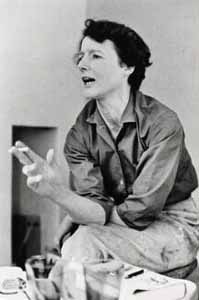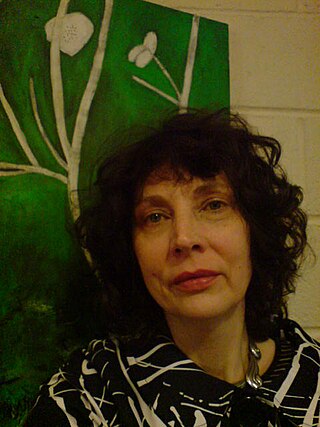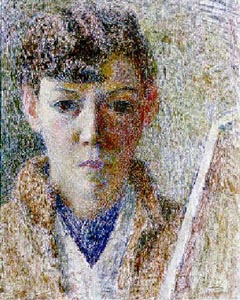
Thomas Gainsborough was an English portrait and landscape painter, draughtsman, and printmaker. Along with his rival Sir Joshua Reynolds, he is considered one of the most important British artists of the second half of the 18th century. He painted quickly, and the works of his maturity are characterised by a light palette and easy strokes. Despite being a prolific portrait painter, Gainsborough gained greater satisfaction from his landscapes. He is credited as the originator of the 18th-century British landscape school. Gainsborough was a founding member of the Royal Academy.

John Constable was an English landscape painter in the Romantic tradition. Born in Suffolk, he is known principally for revolutionising the genre of landscape painting with his pictures of Dedham Vale, the area surrounding his home – now known as "Constable Country" – which he invested with an intensity of affection. "I should paint my own places best", he wrote to his friend John Fisher in 1821, "painting is but another word for feeling".

Walter Richard Sickert was a German-born British painter and printmaker who was a member of the Camden Town Group of Post-Impressionist artists in early 20th-century London. He was an important influence on distinctively British styles of avant-garde art in the mid and late 20th century.

Lucian Michael Freud was a British painter and draughtsman, specialising in figurative art, and is known as one of the foremost 20th-century English portraitists. He was born in Berlin, the son of Jewish architect Ernst L. Freud and the grandson of Sigmund Freud. Freud got his first name "Lucian" from his mother in memory of the ancient writer Lucian of Samosata. His family moved to England in 1933, when he was 10 years old, to escape the rise of Nazism. He became a British naturalized citizen in 1939. From 1942 to 1943 he attended Goldsmiths' College, London. He served at sea with the British Merchant Navy during the Second World War.

Gillian Ayres was an English painter. She is best known for abstract painting and printmaking using vibrant colours, which earned her a Turner Prize nomination.

George Stubbs was an English painter, best known for his paintings of horses. Self-trained, Stubbs learnt his skills independently from other great artists of the 18th century such as Reynolds and Gainsborough. Stubbs' output includes history paintings, but his greatest skill was in painting animals, perhaps influenced by his love and study of anatomy. His series of paintings on the theme of a lion attacking a horse are early and significant examples of the Romantic movement that emerged in the late 18th century. He enjoyed royal patronage. His painting Whistlejacket hangs in the National Gallery, London.
Euan Ernest Richard Uglow was a British painter. He is best known for his nude and still life paintings, such as German Girl and Skull.
Eileen Cooper is a British artist, known primarily as a painter and printmaker.
Lynette Yiadom-Boakye is a British painter and writer, of Ghanaian heritage. She is best known for her portraits of imaginary subjects, or ones derived from found objects, which are painted in muted colours. Her work has contributed to the renaissance in painting the Black figure. Her paintings often are presented in solo exhibitions.

Lucy Elizabeth Kemp-Welch was a British artist and teacher who specialized in painting horses. Though increasingly overlooked after the Second World War, from the late 1890s to the mid-1920s she was one of the country's best-known female artists. As her obituary in The Times noted, 'Like most artists who came to maturity and were established before the end of the nineteenth century, Lucy Kemp-Welch suffered somewhat in her later reputation from the violent changes in art which followed. In her prime as an animal painter she held a position in this country comparable to that of Rosa Bonheur in France, and the only British woman artist of her generation who was more talked about was Lady Elizabeth Butler, painter of "The Roll Call".' Her reputation has since revived, and she is best known today for her large paintings of wild and working horses in the New Forest, and those in military service which she produced during the First World War, as well as for her illustrations to the 1915 edition of Anna Sewell's novel Black Beauty.

Prunella Clough was a prominent British artist. She is known mostly for her paintings, though she also made prints and created assemblages of collected objects. She was awarded the Jerwood Prize for painting, and received a retrospective exhibition at Tate Britain.
Bryan Organ is a British artist considered one of the leading and most innovative English portrait painters of the 20th century. His paintings have included portraits of prominent public figures and of members of the British royal family. Organ is also known for landscape paintings, such as St Pancras Station,, and lithographic studies of animals (Tate). London's National Portrait Gallery holds a total of sixteen of his portraits of which six were commissioned by the Gallery's Trustees.

Robert Peake the Elder was an English painter active in the later part of Elizabeth I's reign and for most of the reign of James I. In 1604, he was appointed picture maker to the heir to the throne, Prince Henry; and in 1607, serjeant-painter to King James I – a post he shared with John De Critz.

Jo Self is an English contemporary artist and poet.

Dod Procter, born Doris Margaret Shaw, (1890–1972) was an English artist, and the wife of the artist Ernest Procter. Her painting Morning was bought for the public by the Daily Mail in 1927.

Henry Perronet Briggs RA was an English painter of portraits and historical scenes.

Eileen Forrester Agar was an Argentine-British painter and photographer associated with the Surrealist movement.
Lubaina Himid is a British artist and curator. She is a professor of contemporary art at the University of Central Lancashire. Her art focuses on themes of cultural history and reclaiming identities.

Charlotte Verity, Lady Le Brun is a painter living and working in London, UK. A monograph on her work, Charlotte Verity was published by Ridinghouse, in November 2016.
Phyllis Ethel Ginger was a British artist and illustrator who, although she had a long career in several different media, is now best known for the topographical watercolours she produced during the Second World War for the Recording Britain project.













